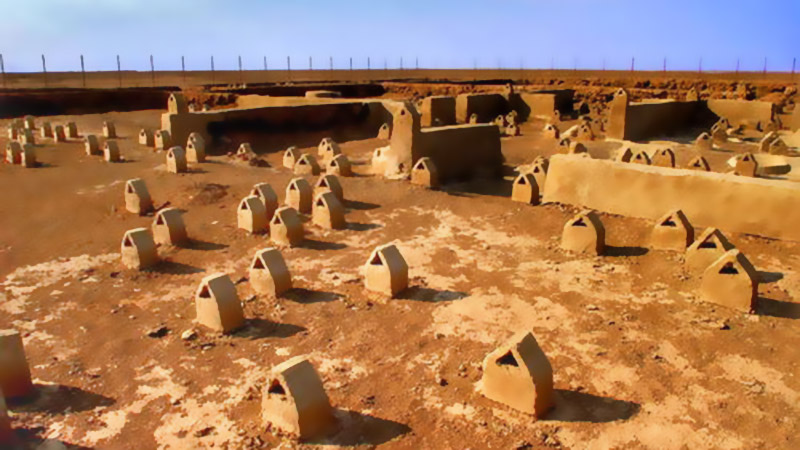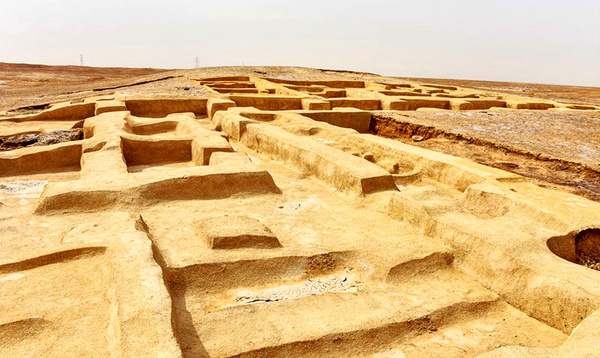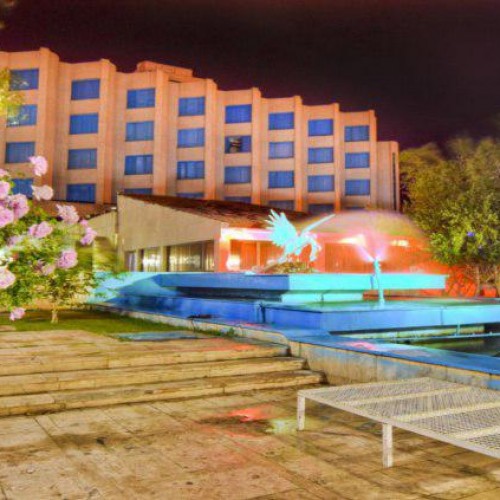
Shahr-e-Sukhteh
Sistan and Baluchestan is Iran`s vastest province located in the southeast of the country. The area has plenty of natural and historical attractions worth visiting. From Martian mountains and Mangrove Forests to Mount Khaje and of course one of the UNESCO World Heritage Sites; Shahr-e-Sukhteh.

Shahr-e-Sukhteh
Shahr-e-Sukhteh (The Burnt City) is one of the 24 UNESCO World Heritage Sites in Iran. The site is the remainings of a civilized nation built around 3200 B.C in the Bronze Age. The mudbrick city was the habitat of a complex society in the southeastern part of Iran.

The city was built on Helmand river banks. Due to environmental changes, it was abandoned, and the vacant city was never the habitat of any other nation. Covering 151 hectares of the land, Shahr-e-Sukhteh is one of the largest sites of its own time. This site is full of information about the time rural life was being replaced by complex urban life. There are pieces of evidence showing that the city was a major trade center of the time.
Findings represent evidence of industrial workshops for producing metal objects using technologies. These metal objects, including decorative objects, tools, and objects of daily-use, were transferred to the market after production. Other workshops were found engaging fabrication of semi-precious stone beads. Findings show signs of improvement in the agriculture and practice of animal husbandry.

History of Shahr-e-Sukhteh
5000 years ago, the Helmand river bank was covered with plants, and abundant sources of water were available for human beings to start a civilization in this area. Shahr-e-Sukhteh used to be divided into five regions including the residence part, central part, industrial part, memorials, and graveyard. The city was built around 3200 B.C and abandoned around 1800 B.C. Shahr-e-Sukhteh had four main periods, and the civilization flourished between 2500 to 2200 B.C.

More About Shahr-e-Sukhteh
Shahr-e-Sukhteh is related to Jiroft culture, which is one of the oldest civilizations on earth. Discoveries show surprising signs of complexity in this area. Some of the remarkable findings during years of excavation in the area are including:
First Animation
A bowel with a series of sequential images depicting a leaping goat. It is said to be the oldest animation found on earth. The drawings on the bowl are showing a goat moving toward a tree, and eating the leaves. The original bowl now is kept in Iran National Museum.

World`s oldest animation
Artificial Eyeball
An artificial eyeball covered with a layer of gold, the eyeball belonged to a woman between 28-32 years old. The eyeball was discovered during the excavation of a grave. It was placed in the left eye socket of the woman`s skull. The design of the eyeball shows attention to the aesthetic aspects while keeping the natural shape and decent knowledge about eye anatomy. The artificial eyeball is available to the visitors of the Iran National Museum.
Brain Surgery
During investigations in the burnt city, a skull was found with a triangular scar, showing the removal of a piece during a surgery. The skull belonged to a 13-year-old girl. Neurologists could diagnose congenital hydrocephalus in her. The skull is available for visitors at the Iranian National Museum of Medical Sciences History.
Another interesting finding is the oldest known backgammon and dice. Nets and fishing hooks found in the city are pieces of evidence of people fishing in the Helmand River. A piece of leather with drawings on it was found recently in excavations of Shahr-e-Sukhteh.

When to Visit Shahr-e-Sukhteh
Shahr-e-Sukhteh is located in a desert and summers are really hot, the best time for visiting Shahr-e-Sukhteh is during winter and autumn. So if you plan to visit Shahr-e-Sukhteh while you are in Iran, the best time is between October to March. You can go for visiting Shahr-e-Sukhteh from 8 A.M to 7 P.M.
Location of Shahr-e-Sukhteh
Shahr-e-Sukhteh is located 57 km south Zabol, a city in Sistan and Baluchestan province, Southeastern part of Iran. The area many historical places to visit around Shahr-e-Sukhteh. Dahan-e-Gholaman, Ghale Rostam, Zabul museum, Bazaar of Zabol.
Where to Eat near Shahr-e-Sukhteh
After visiting Shahr-e-Sukhteh, If you look for a restaurant, you can go to Zabol and have a delicious meal in Aram Hotel`s Restaurant, Laleh Nimrooz Hotel`s Restaurant, Pasargad Restaurant, and Oshida restaurant. If you plan to go to Zahedan, you can find many good restaurants there too. To taste the region`s traditional food and drink, you can go to Berasan restaurant. Sobhan restaurant and Haj Ahmad restaurant are your other options in Zahedan. You can also find fast food at Blue Star Pizza and Shab Pizza.
Where to Stay near Shahr-e-Sukhteh
Sistan and Baluchistan province is a vast area, and you should expect the distance between attractions and your accommodation. The closest city to Shahr-e-Sukhteh is Zabol (56 Kilometers away). You can stay in Aram Hotel or Laleh Nimrooz Hotel in Zabol both of which are budget options. If you plan to stay in Zahedan, you can get there by a two-hour ride (172 km). For a luxury stay in Zahedan, you can go to Grand Esteghlal Hotel. If you are planning a budget trip to Sistan and Baluchestan you can stay in Sarboog Hostel, Amin Hotel, Saleh Hotel, and Zahedan Tourism ITTC Hotel.
Shahr-e-Sukhteh Location
How To Get To Shahr-e-Sukhteh
By Car
You can drive from Zabol toward Zahedan, Shahr-e-Sukhteh is 57 km away
By Plane
You can fly to Zabol or Zahedan from Tehran and drive to Shahr-e-Sukhteh
Other attractions in Zahedan
Hotels near Shahr-e-Sukhteh, Zahedan
Book Your Hotel In Zahedan
Book Your Domestic Flights in Iran
Any Questions?
Ask your questions about accommodations in Shiraz from our travel experts:













 Trusted
Partner
Trusted
Partner